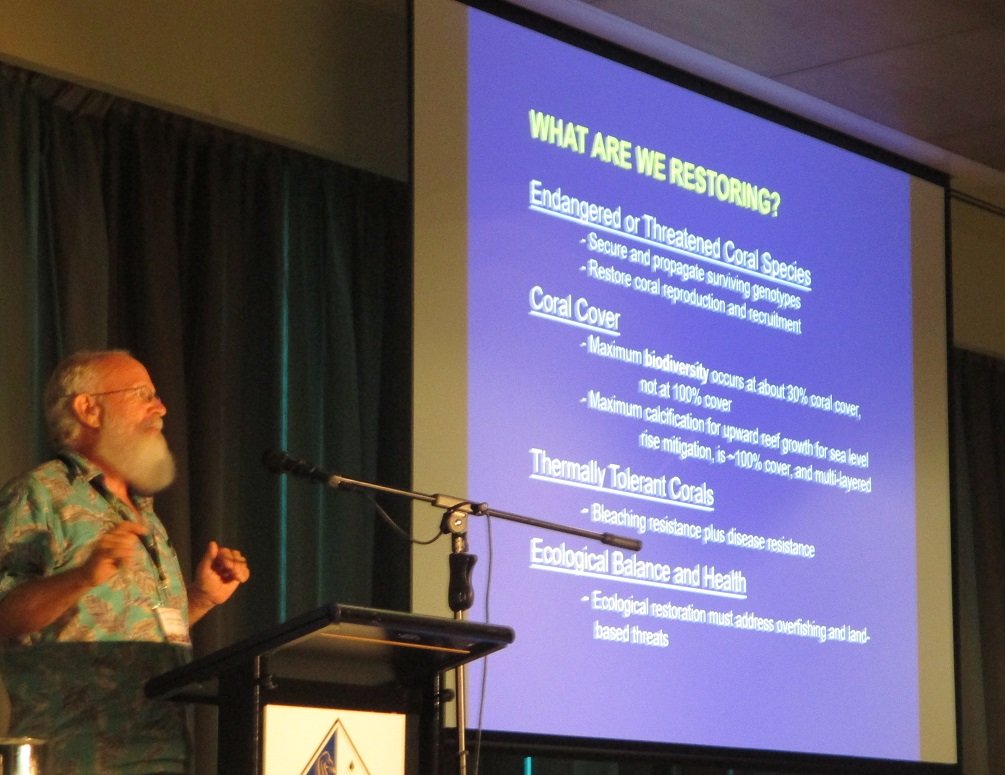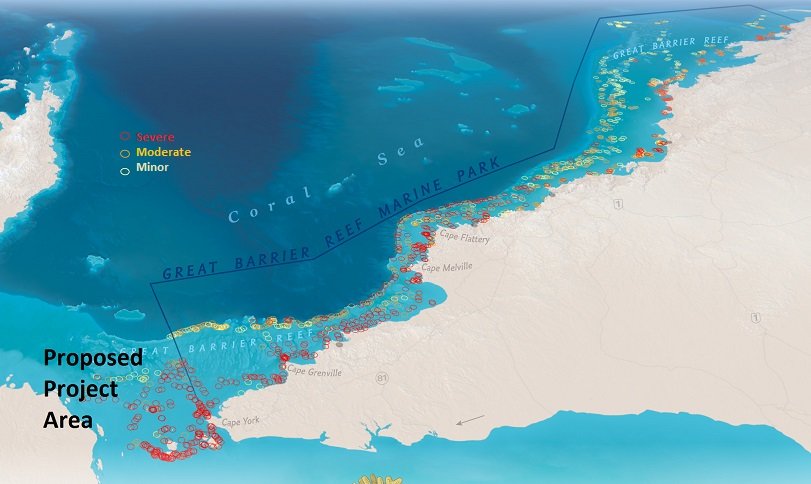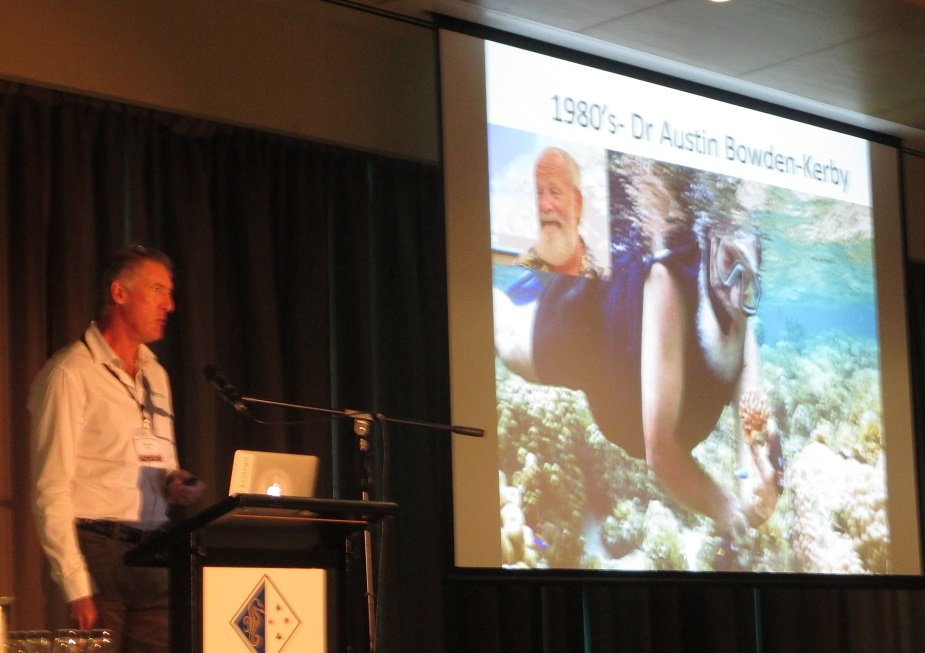By Austin Bowden-Kerby | Director
As you may already know, an estimated half of the corals on the Great Barrier Reef of Australia bleached and died in a double bleachig event in 2015 and 2016. These corals died when the water got too hot in the Australian summer- directly tied to global warming. Some scientists believe that the GBR will be dead by 2050- but we believe otherwise, and based on our work in Kiribati and other places.
But the reef does need our help to get past this serious hurdle. The stategy needed for the GBR is exactly the strategy that we are carrying out elsewhere- to identify, protect, and propagate the corals which did not bleach, and the to replant patches of these hot-water adapted, bleaching resistant corals back to the reef so that they can reproduce and send their babies and algal symbionts throighout the wider reef system.
In February, I applied to the Great Barrier Reef Challenge with our approach, but the application was turned down in favor of projects in cloud brightening to cool the reef, 3D printing of artificual reefs, and installing large fans and artificlal upwelling to cool the reefs. They told me that they were only funding new approahes, not existing (proven) ones!
In July, the first symposium on the restoration of the GBR was held in Cairns, and the organizers paid my airfare from Fiji so that I could present. This presentation is now on the internet at http://www.reefresilience.org/learning-from-reef-restoration-experiences-around-the-world-webcast/
I also gave an interview for Radio Australia's "Pacific Beat" program. In my talk and on the radio program, I emphasized that coral gardening can only help save coral reefs to a certain point- that it buys us time- perhaps 80 years or so- but that if CO2 continues to be released into the atmosphere at such high levels, that ocean acidification will become so bad that it will kill the oceans and destroy all of our progress. Australia and all nations must reduce and evenually eliminate most fossil fuel use- that is the stark reality we face.
The day after the Cairns conference, I was able to visit Austraia's first coral nursery at Fitzroy Island. Stewart Christie and his team at the Reef Restoration Foundation are doing a wonderful job, only having gotten a permit for the work last November. A big problem preventing action now is that permits must clear five differenct agencies for approval, and they are restrictive in what they allow. I was shocked and horrified by the stark reality that no one has been collecting corals on the most heavily impacted reefs in order to protect and propagate them - and so with each passing day more of the bleaching resistant corals that survived the bleaching are being killed off by COTS and snail predators. With the present rules and regulations of the GBRMP set so strongly into law, it may take years before changes can be made so that our strategy can at last be applied widely to the Great Barrier Reef.
However, we discoverd a way round the permitting process- If we work outside of the marine park, on the 10% of the GBR under indigenous control, and with the permission of these indigenous leaders and directly involving the communities in the work, then we can begin the coral work immediately! This is wonderful news, as this extreme north area of the reef was among the most horrifically impacted. Our goal now is to attempt to put the indigenous peoples of Australia in the forefront of saving the Great Barrier Reef. We are following up with contacts already made at the Cairns meeting and hopefully we will have some work to report by November.
Because we have succeeded in getting a small grant to help with the restoration work on Kiribati, with a three-week trip scheduled for January, it looks like we do have the resources needed to divert our attention to the GBR, at least with a small beginning.... all that is missing now is to identify the appropriate aand interested local partners. And we will need more resources, and so we have begun seeking funds from other sources. For now this plea on GloblGiving is all that we have. We thank each of our donors for assisting- please do spread this message to all who might support this important work.
I find that it is interesting that involving the indigenous peoples in this most important work will in fact be fulfilling biblical prophecy: "The first shall be last and the last shall be first."
We do this work to help ensure that future generations will inherit a bountiful and beautiful world, where coral reefs contiue to thrive. "Blessed are the meek for they shall inherit the earth."
Blessings and light to you all.
Links:
Project reports on GlobalGiving are posted directly to globalgiving.org by Project Leaders as they are completed, generally every 3-4 months. To protect the integrity of these documents, GlobalGiving does not alter them; therefore you may find some language or formatting issues.
If you donate to this project or have donated to this project, you can receive an email when this project posts a report. You can also subscribe for reports without donating.
Support this important cause by creating a personalized fundraising page.
Start a Fundraiser

